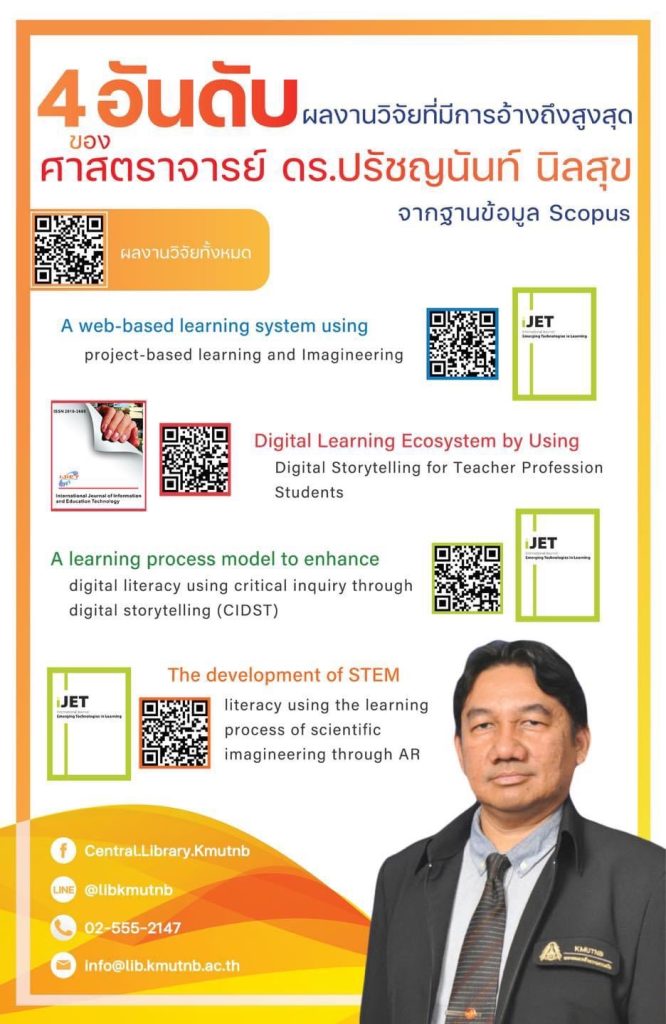Abstract
Globally, COVID-19 has disrupted educational practices, causing basic education institutions in Thailand to close temporarily. Schools in Thailand as well as the world over have switched to online learning environments to guarantee students’ educational continuation. The purposes of this study were firstly to determine whether digital technology is required for learning loss recovery; secondly, to conduct a systematic literature review using bibliometric keywords; thirdly, to assess the need for using digital technology to recover students’ learning losses at the basic education level, both during and after the COVID-19 pandemic, and finally, to summarize data in an infographic landscape format pertaining to this topic. A questionnaire survey was conducted with 600 online respondents from throughout Thailand. The respondents included 56 educational supervisors, 40 school administrators, and 504 teachers. The results show that the following can be used: (a) student communication websites and applications, (b) student work acceptance websites and applications, (c) learning management systems, (d) digital media libraries, (e) online assessment tools, and (f) teaching methods and tools for future use. The respondents indicated that students have learning loss relating to (a) morality, ethics and manners, (b) good citizenship, (c) imagination and creativity, (d) health promotion, and (e) mathematical processes.
Kitiya Promsron, Prachyanun Nilsook, jira Jitsupa, Watcharee Sangboonraung, Orawan Saeung and Wilawan Jinwan (2024)
Needs Assessment in the use of Digital Technology for Learning Loss Recovery of Students at the Basic Education Level.
International Journal of Learning, Teaching and Educational Research.
Vol. 23, No. 1, pp. 59-83, January 2024. https://doi.org/10.26803/ijlter.23.1.4
![]() ของศาสตราจารย์ ดร.ปรัชญนันท์ นิลสุขดูผลงานวิจัยทั้งหมด ของศาสตราจารย์ ดร.ปรัชญนันท์ นิลสุข จากฐานข้อมูล Scopus
ของศาสตราจารย์ ดร.ปรัชญนันท์ นิลสุขดูผลงานวิจัยทั้งหมด ของศาสตราจารย์ ดร.ปรัชญนันท์ นิลสุข จากฐานข้อมูล Scopus![]() https://bit.ly/3SvETHu#libkmutnb มัดรวมมาให้แล้ว กับผลงานวิจัยที่มีการอ้างถึงมากที่สุด 4 ลำดับแรก จากฐานข้อมูล Scopus
https://bit.ly/3SvETHu#libkmutnb มัดรวมมาให้แล้ว กับผลงานวิจัยที่มีการอ้างถึงมากที่สุด 4 ลำดับแรก จากฐานข้อมูล Scopus ![]()
![]() A web-based learning system using project-based learning and Imagineeringhttps://bit.ly/42fueDR
A web-based learning system using project-based learning and Imagineeringhttps://bit.ly/42fueDR![]() Digital Learning Ecosystem by Using Digital Storytelling for Teacher Profession Studentshttps://bit.ly/49oNzFh
Digital Learning Ecosystem by Using Digital Storytelling for Teacher Profession Studentshttps://bit.ly/49oNzFh![]() A learning process model to enhance digital literacy using critical inquiry through digital storytelling (CIDST)https://bit.ly/42aYLme
A learning process model to enhance digital literacy using critical inquiry through digital storytelling (CIDST)https://bit.ly/42aYLme![]() The development of STEM literacy using the learning process of scientific imagineering through ARhttps://bit.ly/42b8SHO
The development of STEM literacy using the learning process of scientific imagineering through ARhttps://bit.ly/42b8SHO![]() คู่มือการตั้งค่า Proxyhttps://qrgo.page.link/w4sHi
คู่มือการตั้งค่า Proxyhttps://qrgo.page.link/w4sHi![]() ใช้งานผ่าน OpenAthenshttps://my.openathens.net
ใช้งานผ่าน OpenAthenshttps://my.openathens.net
